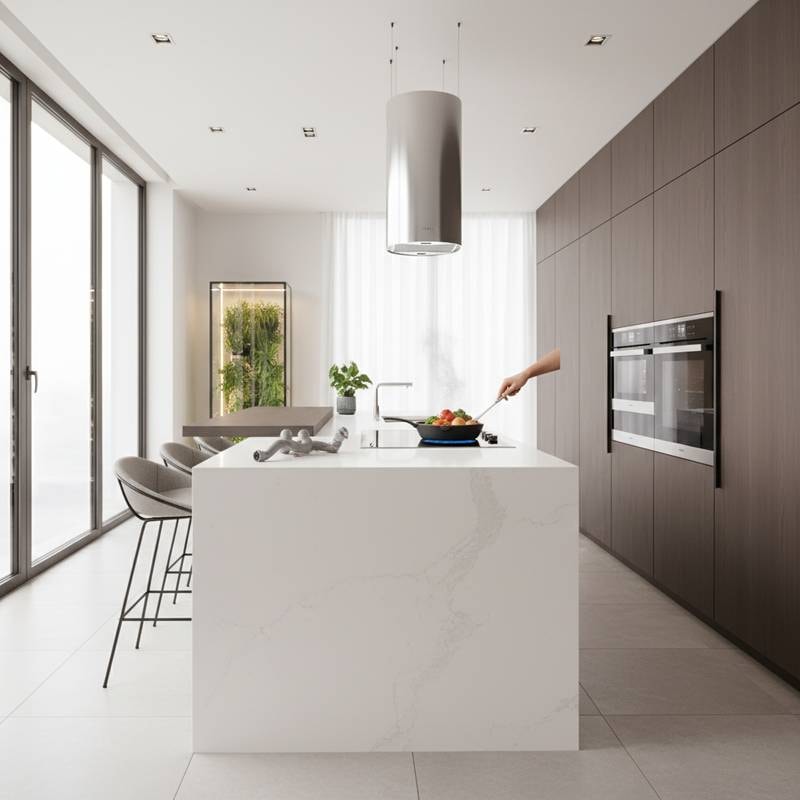Induction Cooktops: Transition from Gas to Efficient Kitchen Technology
Induction cooktops represent a forward-thinking solution for modern kitchens. These systems enhance cleanliness, safety, and efficiency. Homeowners undertaking renovations or replacing outdated gas units find induction options practical, stylish, and accessible across various budgets.
Key Advantages of Induction Technology
Induction cooktops employ electromagnetic fields to heat cookware directly, bypassing the surrounding air. This method accelerates cooking times, maintains cooler kitchen environments, and significantly lowers energy consumption. Food preparation becomes more precise, with reduced risk of overheating.
Safety features further distinguish induction systems. Heating activates only when compatible cookware occupies the zone, leaving the surface cool otherwise. This design minimizes burn risks, making it suitable for households with children or frequent multitasking.
Affordability Across Budget Levels
Induction technology accommodates diverse financial situations. Portable single-zone units, which connect to standard outlets, cost less than fifty dollars and suit renters or compact spaces. Two-zone models range from one hundred to five hundred dollars, ideal for apartments or supplemental cooking areas. Built-in four-zone cooktops begin at seven hundred dollars, varying by brand and features.
Installation for replacing gas units requires a 240-volt electrical connection, typically a one-time expense of several hundred dollars. Over time, these systems offset costs through reduced energy bills. Additionally, they eliminate pollutants from gas combustion, benefiting indoor air quality and health.
Design Integration and Practicality
Induction surfaces feature smooth black glass that cleans easily without grates or residue traps. This aesthetic elevates any kitchen, from modest setups with laminate counters to expansive designs. The seamless appearance complements various styles, enhancing visual appeal.
Pair induction cooktops with materials such as brushed metal backsplashes or textured tiles to achieve a premium effect affordably. Combining them with wooden cabinetry creates a harmonious balance of warmth and modernity, suitable for diverse interior themes.
Enhancing Cooking Performance
Induction provides responsive heat control, boiling water in moments and preventing scorching during reductions. Tests demonstrate that induction boils pasta water nearly twice as fast as gas, conserving time and resources. Digital interfaces allow instant adjustments for optimal results.
Portable units offer similar benefits for budget-conscious users. These lightweight devices store conveniently and pair with induction-compatible cookware like cast iron skillets for versatile meals, including stir-fries and soups.
Selecting Compatible Cookware
Induction requires ferromagnetic materials for effective heating. Test cookware by attaching a magnet to the base; adhesion confirms compatibility. Options include cast iron and certain stainless steel pieces.
Begin with essential items if upgrading gradually. Brands such as T-fal, Cuisinart, and Tramontina provide reliable, cost-effective cookware that withstands regular use and delivers consistent performance.
Practical Installation in Various Settings
Induction cooktops fit seamlessly into existing spaces, often requiring minimal modifications to counter cutouts. This adaptability supports quick retrofits in apartments, studios, or full renovations. Professional results emerge without extensive disruptions.
For visual transformations, induction units maintain a polished, contemporary profile. They integrate well in high-traffic areas, supporting both functionality and design goals.
Environmental and Health Improvements
Gas stoves release carbon monoxide and nitrogen dioxide, compromising indoor environments. Induction eliminates these emissions, promoting clearer air and reducing respiratory issues. The lack of radiant heat also lowers cooling needs, particularly in warmer regions.
Energy efficiency compounds these gains, with direct heating minimizing waste. Regular use translates to measurable savings on utility costs and environmental impact.
Maximizing Benefits in Daily Use
Adopting induction streamlines routines through effortless operation and maintenance. Meals prepare evenly, and surfaces remain pristine with simple wiping. Start with a portable unit for trials or opt for multi-zone built-ins with bridge functions for larger cookware.
This technology equips kitchens for professional-grade outcomes, regardless of scale. Homeowners gain a reliable, innovative cooking solution that aligns with sustainable and stylish living.










